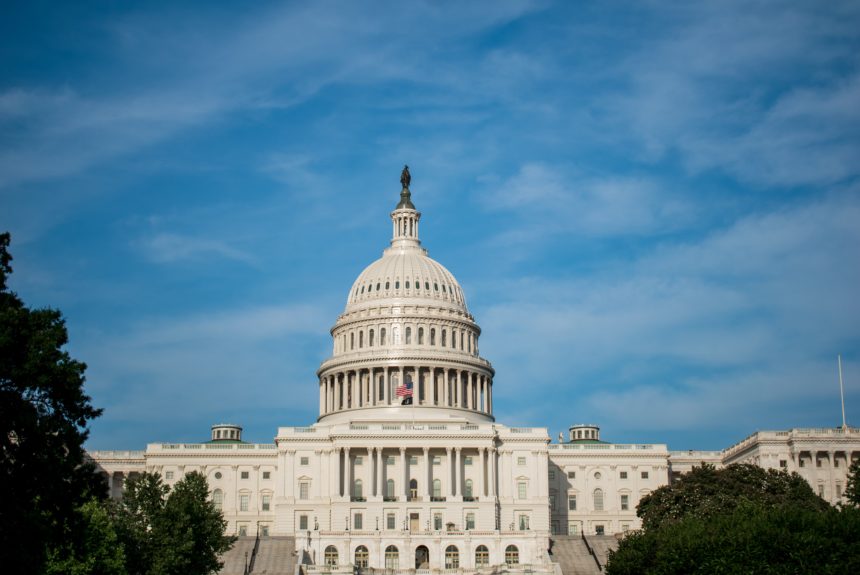The Senate’s 2700-page bipartisan infrastructure bill includes a slew of energy, environmental, and climate programs. The bill carries a hefty $1.2 trillion price tag, and many programs overstep the role of the federal government by subsidizing mature technologies. However, others would enhance government research and development, dedicate taxpayer resources to conservation, and allow infrastructure projects to be built in a timely manner.
The legislation would increase government spending for several energy research and development initiatives including hydrogen, carbon capture and sequestration, renewable energy, battery storage and more. One of the highlights is $21.5 billion for the creation of a new Office of Clean Energy Demonstrations to see early-stage research through demonstration as a pathway for increased market viability.
It also includes $3.5 billion to establish four direct air capture (DAC) hubs and would appropriate funding for pre-commercial and commercial DAC prizes that the Energy Act of 2020 authorized. DAC is an intriguing technology as it effectively vacuums carbon dioxide out of the atmosphere to reverse climate change. DAC is attracting major investments and could be a key piece of the puzzle to solve the collective action challenges global climate change presents, where a majority of current and future emissions are coming from China and other developing countries.
The bill would fund many efforts related to science and environmental efforts and conservation. The National Oceanic and Atmospheric Administration (NOAA) would receive $2.6 billion. That funding contains “$492 million to map and forecast inland and coastal flooding, including ‘next-generation water modeling activities.’ NOAA would also get $50 million to predict, model and forecast wildfires.” In total, the bill has “at least $5.75 billion for restoring, monitoring and researching forests, according to the legislative text and summary. Beyond money, the package also includes policies that could make it easier to prepare for wildfires.” The bill also contains measures for watershed and coastal restoration, $11.6 billion to the Army Corps of Engineers for flood control and river dredging, and money for the environmental remediation of abandoned mines.
>>>READ: Regulatory Improvement is a Win for Infrastructure, the Environment
To stretch the dollars further for most of these energy, climate and environmental spending efforts, a predictable and efficient permitting process is critical. One of the primary obstacles to the development of traditional infrastructure, energy infrastructure and conservation efforts has been the National Environmental Policy Act, or NEPA. Importantly, the bipartisan infrastructure bill would codify several NEPA reforms under the previous administration, such as the “One Federal Decision” structure. That framework designates a “lead” agency for major projects and allows relevant agencies to aggregate reviews into a single decision rather than a complicated web and timeline of conflicting reviews from many different agencies. The bill would also limit environmental impact statements to 200 pages or fewer. In past years, those statements have more than tripled in page length.
Yet another regulatory improvement is that “Several provisions of the bill also add flexibility to the federal-state dealings for planning and managing highway projects. Projects involving federal land management agencies would also be streamlined by allowing use of environmental assessments previously prepared by the Federal Highway Administration for a similar project. The use of existing documentation should apply across the government.”
Improvements to the environmental review and permitting process are essential for roads, bridges, clean energy projects, water infrastructure and wildfire management. As detailed in the Property and Environment Research Center’s, “Fix America’s Forests” report, authors Holly Fretwell and Jonathan Wood detail how NEPA has hindered forest restoration. A streamlined process would allow for cleaner, more efficient technologies to come online sooner and expedite environmental remediation plans while still ensuring that community voices are heard, and the public’s health and safety are protected.
Of course, regulatory reforms could go much further. For instance, the bill appropriates $3.5 billion to the National Flood Insurance Program while excluding many necessary reforms that would protect taxpayers and better align private sector risk with investment decisions. Army Corps dredging projects would be more efficient, cheaper and quicker if Congress repealed the Foreign Dredge Act. Congress should continue to enact reforms that unlock more private sector investment and stretch taxpayer money further.
To be sure, there’s plenty to be concerned about regarding the bipartisan infrastructure bill. Many programs are far outside the purview of the federal government and needlessly waste billions of taxpayer dollars. Nevertheless, the bill takes important steps forward on energy research, development and demonstration, environmental conservation and remediation and improving several regulatory processes.
The views and opinions expressed are those of the author’s and do not necessarily reflect the official policy or position of C3.
